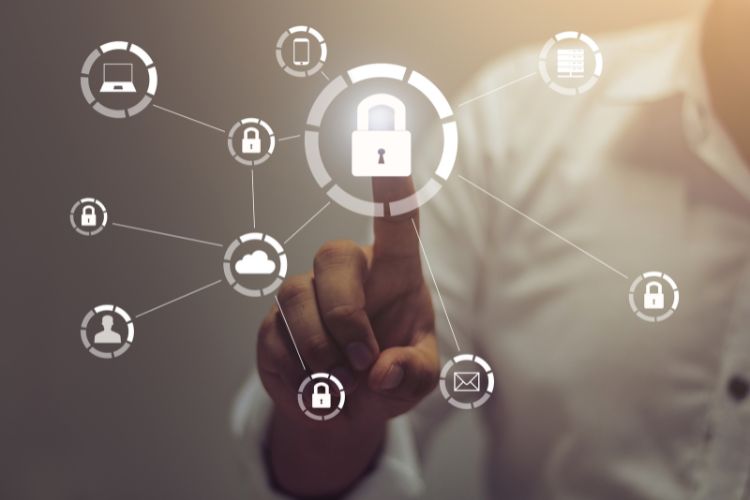The internet has opened up a whole world of information to everyone with a connection. Unfortunately, some of those connections are completely open to others with dishonorable intentions, to use an old cliché. From the earliest days of ARPAnet to the IoT (Internet of Things) revolution, data has been as valuable as currency and just as enticing to those with opportunities to transfer that data from you to them, illegally.
The bigger the data pool, the more attractive it is to hackers and others with a technology bent. Gartner predicts that executive performance evaluations will be increasingly linked to ability to manage cyber risk. Cybersecurity will be added to the due diligence functions of managers at many levels of the company, not just the CIO. A major reason for this change is that almost one-third of the world’s nations will regulate ransomware response within the next three years.
Gartner recommends that cybersecurity leaders build the following strategic planning assumptions into their security strategies for the next two years.
Through 2023, government regulations requiring organizations to provide consumer privacy rights will cover 5 billion citizens and more than 70% of global GDP.
As of 2021, almost 3 billion individuals had access to consumer privacy rights across 50 countries, and privacy regulation continues to expand. Gartner recommends that organizations track subject rights request metrics, including cost per request and time to fulfill, to identify inefficiencies and justify accelerated automation.
By 2025, 80% of enterprises will adopt a strategy to unify web, cloud services, and private application access from a single vendor’s SSE (security service edge) platform.
With a hybrid workforce and data everywhere accessible by everything, vendors are offering an integrated SSE solution to deliver consistent and simple web, private access, and SaaS application security. Single-vendor solutions provide significant operational efficiency and security effectiveness compared with best-of-breed solutions, including tighter integration, fewer consoles to use, and fewer locations where data must be decrypted, inspected and re-encrypted.
60% of organizations will embrace Zero Trust as a starting point for security by 2025. More than half will fail to realize the benefits.
The term zero trust is now prevalent in security vendor marketing and in security guidance from governments. As a mindset — replacing implicit trust with identity-based and context-based risk appropriate trust — it is extremely powerful. However, as zero trust is both a security principle and an organizational vision, it requires a cultural shift and clear communication that ties it to business outcomes to achieve the benefits.
By 2025, 60% of organizations will use cybersecurity risk as a primary determinant in conducting third-party transactions and business engagements.
Cyberattacks related to third parties are increasing. However, only 23% of security and risk leaders monitor third parties in real time for cybersecurity exposure, according to Gartner data. As a result of consumer concerns and interest from regulators, Gartner believes organizations will start to mandate cybersecurity risk as a significant determinant when conducting business with third parties, ranging from simple monitoring of a critical technology supplier to complex due diligence for mergers and acquisitions.
Through 2025, 30% of nation states will pass legislation that regulates ransomware payments, fines, and negotiations, up from less than 1% in 2021.
Modern ransomware gangs now steal data as well as encrypt it. The decision to pay the ransom or not is a business-level decision, not a security one. Gartner recommends engaging a professional incident response team as well as law enforcement and any regulatory body before negotiating.
By 2025, threat actors will have weaponized operational technology environments successfully to cause human casualties.
Attacks on OT (operational technology) – hardware and software that monitors or controls equipment, assets, and processes – have become more common and more disruptive. In operational environments, security and risk management leaders should be more concerned about real world hazards to humans and the environment, rather than information theft, according to Gartner.
By 2025, 70% of CEOs will mandate a culture of organizational resilience to survive coinciding threats from cybercrime, severe weather events, civil unrest, and political instabilities.
The COVID-19 pandemic has exposed the inability of traditional business continuity management planning to support the organization’s response to a large-scale disruption. With continued disruption likely, Gartner recommends that risk leaders recognize organizational resilience as a strategic imperative and build an organization-wide resilience strategy that also engages staff, stakeholders, customers, and suppliers.
By 2026, 50% of C-level executives will have performance requirements related to risk built into their employment contracts
Most boards now regard cybersecurity as a business risk rather than solely a technical IT problem, according to a recent Gartner survey. As a result, Gartner expects to see a shift in formal accountability for the treatment of cyber risks from the security leader to senior business leaders.
As Richard Addiscott, Gartner’s senior director analyst, says, “We can’t fall into old habits and try to treat everything the same as we did in the past. Most security and risk leaders now recognize that major disruption is only one crisis away. We can’t control it, but we can evolve our thinking, our philosophy, our program, and our architecture.”
Want to tweet about this article? Use hashtags #construction #sustainability #infrastructure #IoT #AI #5G #cloud #edge #futureofwork


